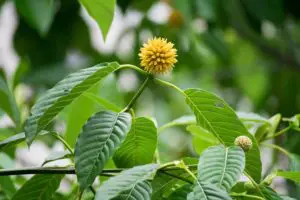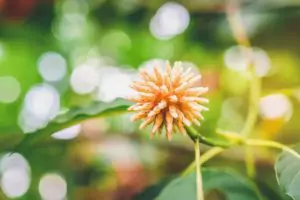Don’t Buy Kratom Seeds Until You Read This
February 25, 2021
Because it can be difficult to find kratom seeds for sale, you might be tempted to buy the first seeds you find. However, there are three requirements you’ll want the vendor to meet before purchasing the seeds.
You can buy kratom seeds online from various vendors, in smoke shops, or your local botanists. Give the local places a call to ensure they have kratom seeds before you drive there. Reddit users will sometimes sell the kratom seeds they personally grow.
So as long as you look out for the following requirements, you can rest assure you’re buying viable kratom seeds. Let’s jump right to it!
3 Things You Should Look For Before Buying Kratom Seeeds
- Not every seed you buy will sprout into a kratom plant. Unfortunately, some seeds will remain dormant no matter how good of a job you do planting them. The percentage of seeds that sprout is called the viability rate. You’ll want a viability rate of at least 10% and preferably 20% for fresh seeds.
- The longer you wait to plant your kratom seeds, the more your viability rate will decrease. When the seeds are separated from their parent plant, the germination of the seeds begins to slowly decrease. Ask your vendor how long ago the seeds were separated from the parent plant to get a good idea of how fresh the seeds are. If it’s been longer than two weeks don’t waste your money. Kratom seeds only have a few days after they’ve been harvested to germinate.
- Last but not least, you’ll want to make sure the kratom plant was not grown using pesticides or heavy metals otherwise your kratom seeds will contain these harmful chemicals, which can produce negative long term effects for the user.
What Are Kratom Seeds & Where is Kratom Grown
Kratom trees produce seed pods, each of which contains an average of 50 seeds. In the wild, these seeds fall to the ground or are carried to nearby places to germinate by animals. They aren’t native to anywhere but Southeast Asia, which means kratom enthusiasts who live in other areas of the world have to get a little more creative about propagation.
How Long Does it Take to Grow a Kratom Plants?

Under the right conditions, kratom is a fast-growing tree. With plenty of light, warm weather, and nitrogen-rich soil, it can reach heights of up to 20 feet in two years. That means you’ll have a hard time growing it anywhere that doesn’t have favorable conditions for outdoor cultivation.
You shouldn’t start harvesting leaves until the tree is at least two years old, so there’s little point in growing kratom for anything other than ornamental or experimental purposes if you can’t accommodate at least 20 feet of growth.
How to Grow Kratom, The Right Way
Growing mitragyna speciosa seeds for sale requires a lot of skill and some patience. The kratom plant seeds must be fresh, so make sure you prepare the soil before ordering them. Here’s what you’ll need to make sure the ground matches the conditions found in Southeast Asia where this tree ordinarily thrives:
- High humus levels
- Exceptional fertility
- Plenty of nitrogen
- A pH range of 5.5 to 6.5
- Well-draining soil that can retain some moisture
- A temperature-controlled environment
- Lights that mimic natural sunlight
- Optimal humidity levels
- A space large enough to cultivate the tree indoors if outdoor conditions are not ideal
If you’re lucky enough to live someplace with temperatures, light cycles, and humidity levels that mimic those of the plant’s native lands, you may be able to grow kratom trees outdoors. It’s still best to germinate them inside under more controlled conditions, then slowly acclimate the seedlings to the outdoor temperatures.
During the germination period, make sure the seeds do not dry out. You’ll need to keep the soil moist, but not soaked. You should also stay artificial lighting or natural sunlight low during this growth phase and aim for humidity levels of between 72 and 74%.
Once the trees have moved from the seedling stage into the vegetative stage, you’ll have to think about where to put them. If you plan to plant them outdoors in a warm, sunny garden, you won’t have to worry about artificial lighting and temperature control. You will still have to supplement your soil as these trees have high nutrient needs.
Growing kratom trees to maturity indoors are complicated, but it can be done. You can grow the trees in large pots instead of in the ground. This can make it easier to control things like soil drainage and nutrient concentrations.
Since kratom trees grow to be 20 feet tall within just two years, you’ll need either a colossal greenhouse or a full-scale nursery to keep them alive indoors. If you already have a space that will accommodate full-sized kratom trees, that’s great.
If not, you might want to stop and consider how serious you are about kratom cultivation. There’s nothing wrong with experimenting with growing these plants in smaller greenhouses, but you won’t be able to grow healthy, full-sized kratom trees to produce prolific crops unless you have enough space.
There’s little point in growing a kratom tree if you don’t want to harvest the leaves. There are a few things you should know if you plan to harvest your kratom. First, most strains are classified as red, green, or white vein strains.
What the average consumer doesn’t know is that this coloration isn’t predetermined. The leaves of the trees change color in response to plant genetics, the maturity of the tree, and how much sun it receives during the vegetative stage of growth. Some experts even believe that vein color changes over time. The veins change from red to green to white, then eventually turn brown.
When you harvest your kratom, pay attention to the vein color. This will help you figure out when the leaves are mature. You should leave the new growth alone and stick to harvesting fully mature leaves. Just keep in mind that alkaloid composition changes over time. Fresh growth leaves don’t have as many beneficial alkaloids as mature leaves. Once they reach maturity, it’s important to harvest them before alkaloid concentrations begin to drop.
Why You Should Use Kratom Seeds to Grow Your Kratom

Growing your kratom trees from seed can help you form a more intimate connection with the plant. It also gives you more control over growing conditions and ensures that your final product will not be contaminated. Growing kratom is also environmentally friendly, and it can even benefit your land if you can grow the trees outdoors.
Beyond these more intangible benefits, you can also save a ton of money by growing kratom at home. It’s legal in most states, although some localities do restrict kratom sales and cultivation, so you may even be able to make some money off your kratom tree once it starts producing viable harvests.
Processing kratom leaves it is relatively easy. All you have to do is run them under water to remove dirt and debris, then dry them inside in a low-humidity environment or outdoors in the sun. Once dry, the leaves can be ground into a powder. You can use this powder in the same way you would any commercially available product.
If you don’t have a green thumb, growing kratom seeds for sale might not be the best idea. Those who live in warm, sunny places with good soil have nothing to lose by purchasing some seeds and germinating them at home. Whether you’re an avid kratom fan or just a severe plant enthusiast, or you buy kratom seeds and cultivate them into full-grown kratom trees outdoors or in a greenhouse can help you get in touch with nature and develop an increased appreciation for this beautiful plant.